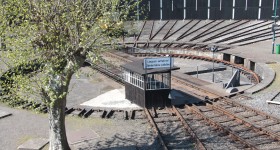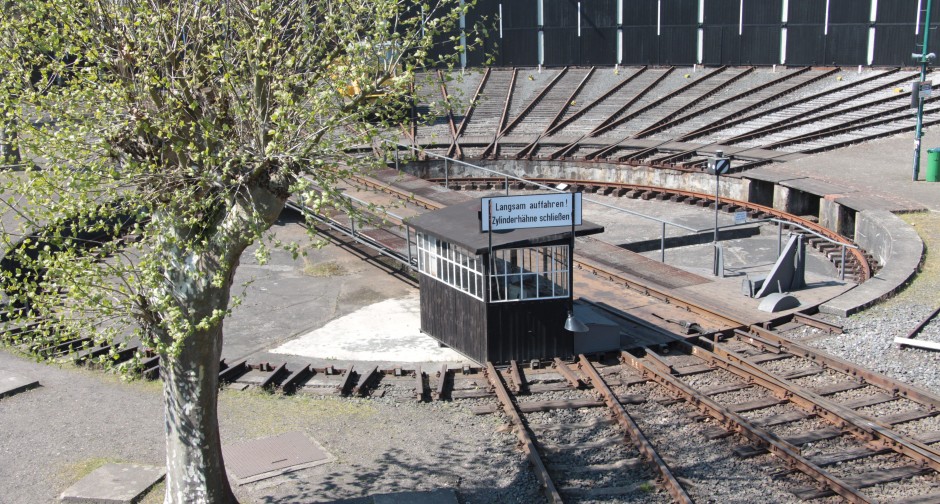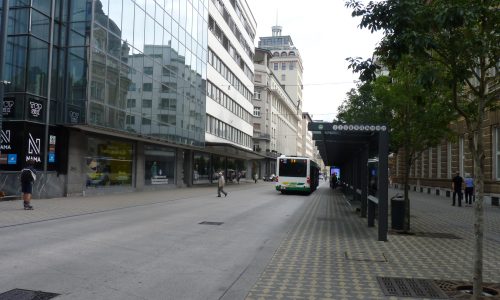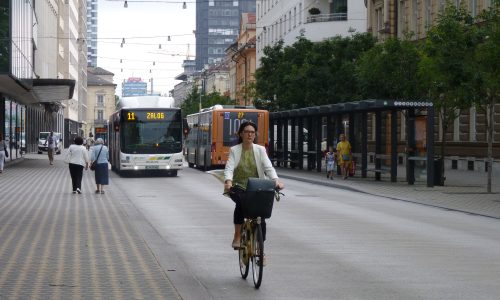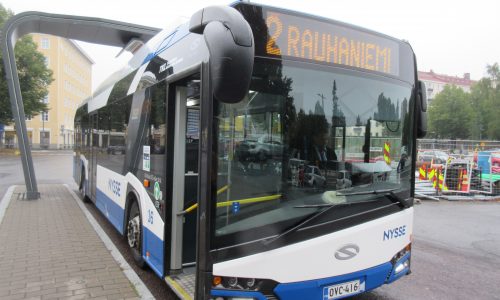Railway turntable
The 20 meter long railway turntable from the year 1918 was used to turn railway vehicles in the desired direction (forwards/backwards) and also to save space when changing the vehicle over to a neighbouring rail. The turntable is a steel construction which supports a bridge with rails in order to accommodate the vehicles.
The turntable was in use at the locomotive depot in Bochum-Dahlhausen until it was shut down in 1969. Since 1977 the Bochum Railway Museum stands on the former compound of the locomotive depot. It now uses the turntable for the railway operation of the museum.
The turntable is driven by an electric motor (it can also be powered through an air engine or by a hand crank). It moves along a rail which runs parallel to the circular turntable pit (underneath the turntable).
The sounds of the railway turntable are made by the motor and the wheels running along the rails. This turning process was carried out particularly with steam locomotives with a trailing tender. The reason for this is that they can only attain maximum speed when moving forwards and so, cannot pull a train in either direction, as modern locomotives can. Therefore turntables were predominantly situated at main train stations and in train depots, right by the roundhouse. The roundhouse enabled easy access to the individual locomotives’ maintenance areas, which would otherwise only be possible by a complex network of switches.
In the 1950s – with the decline of steam locomotives – fewer and fewer turntables were needed in railway operations.
Sound recordist: Konrad Gutkowski/Julian Blaschke
Photographer: Konrad Gutkowski/Julian Blaschke
Video recordist: Konrad Gutkowski/Julian Blaschke
Specs:
Filesize:
Duration:
Channels:
19.8 MB
1 min 52 s
2 (Stereo)
Bit rate:
Bit depth:
Level:
1411 kb/s
16 bit
101,3 dB
Recorded on April 19, 2014
Eisenbahnmuseum Bochum
Bochum, GERMANY
Creative Commons License

